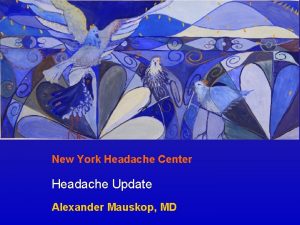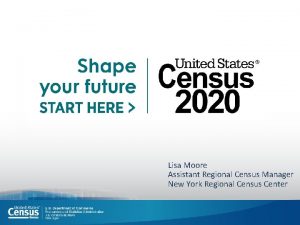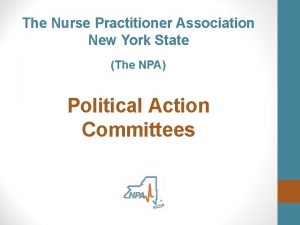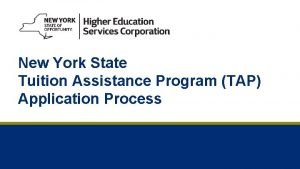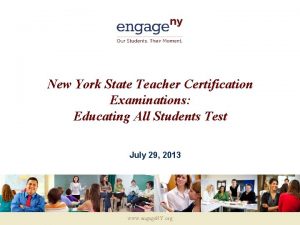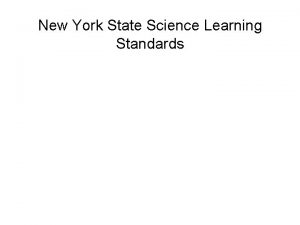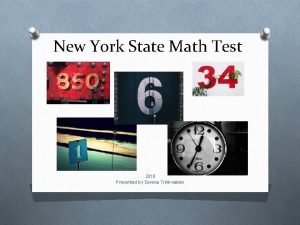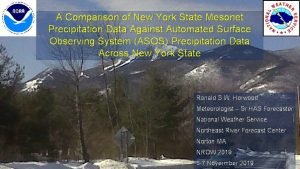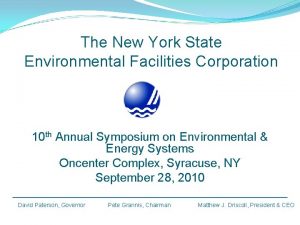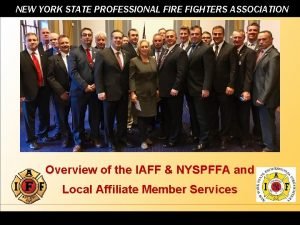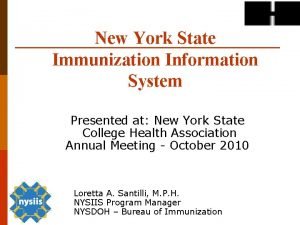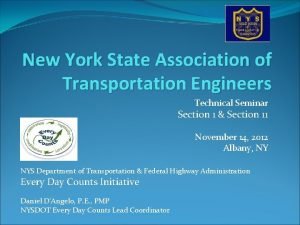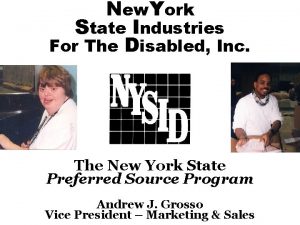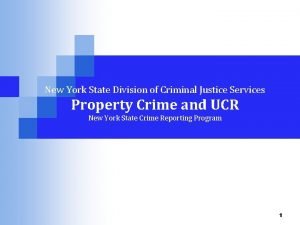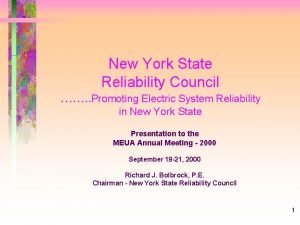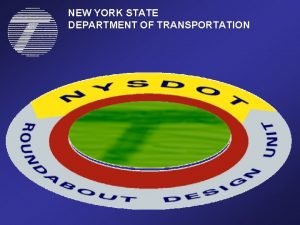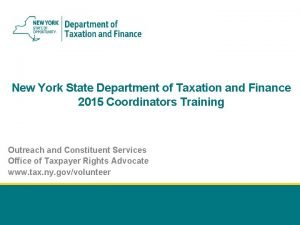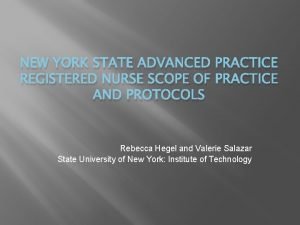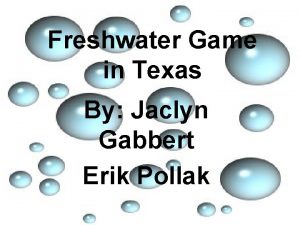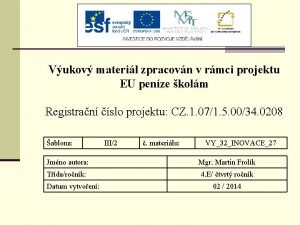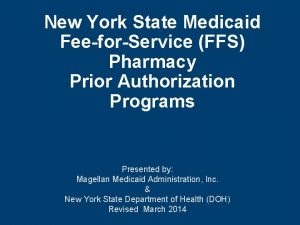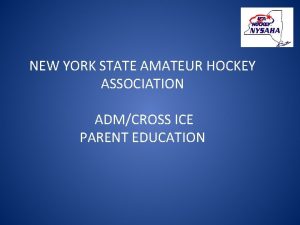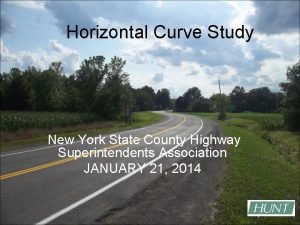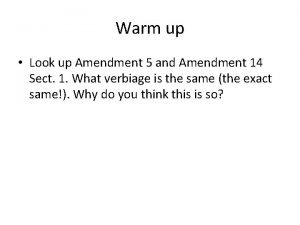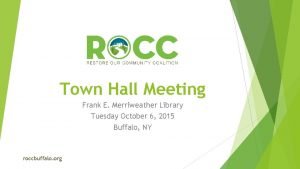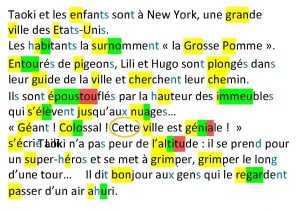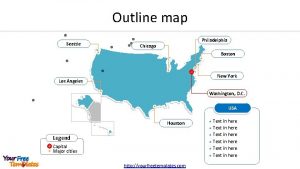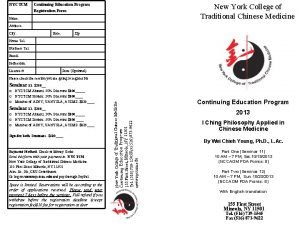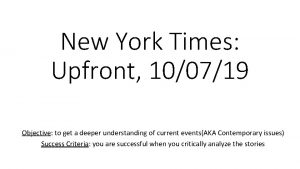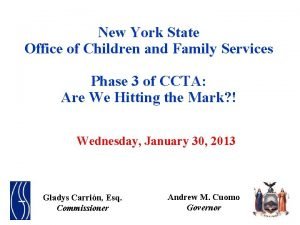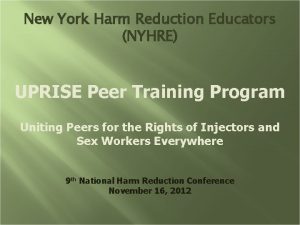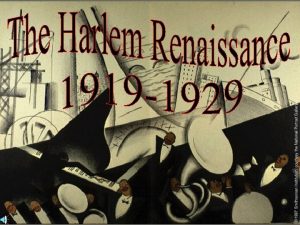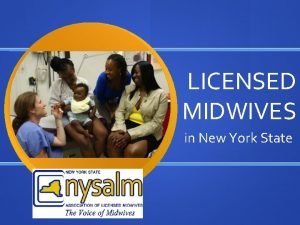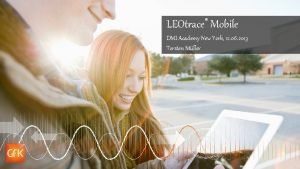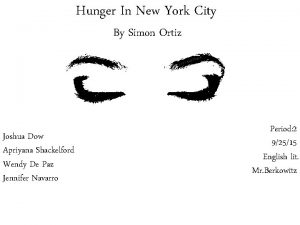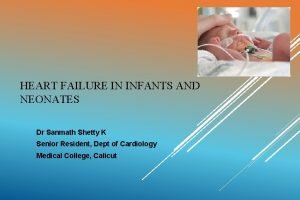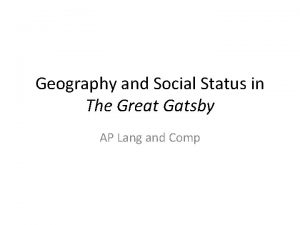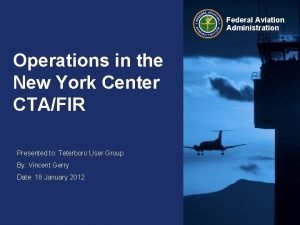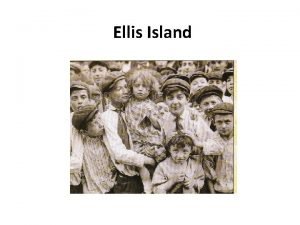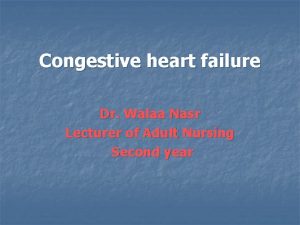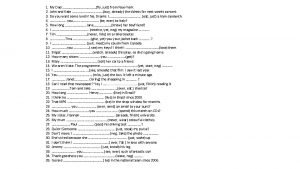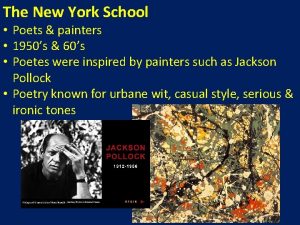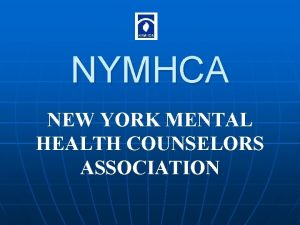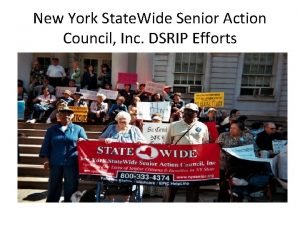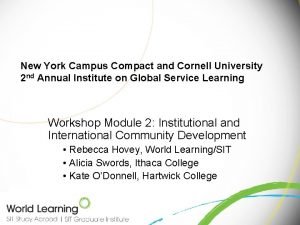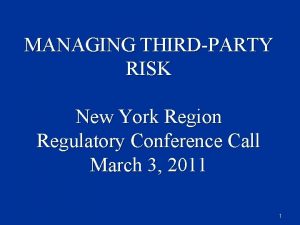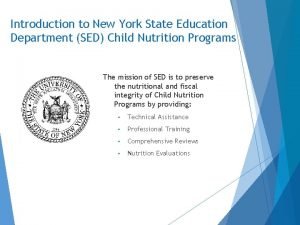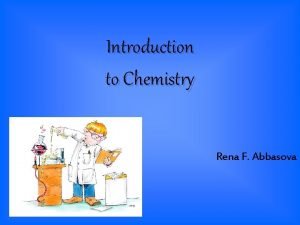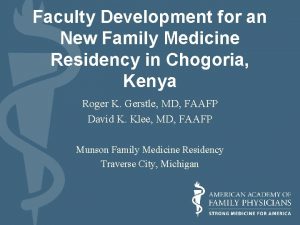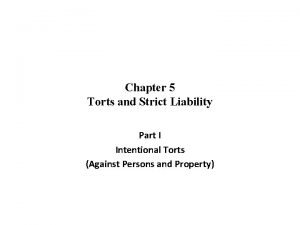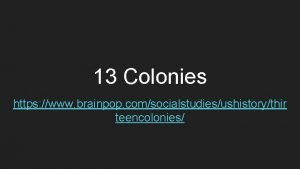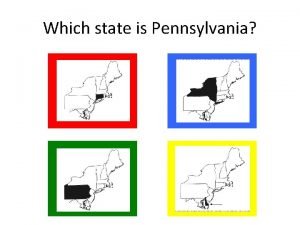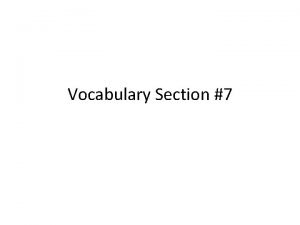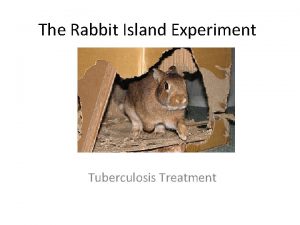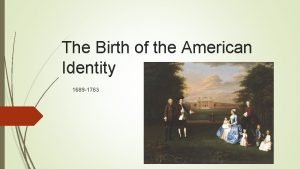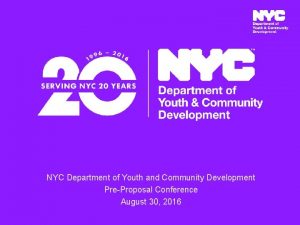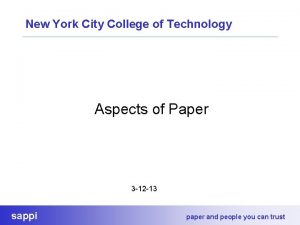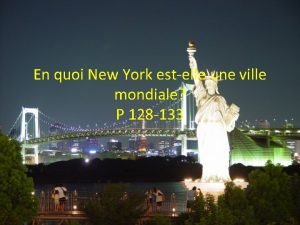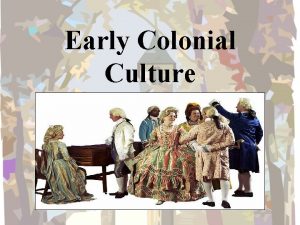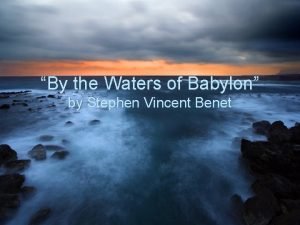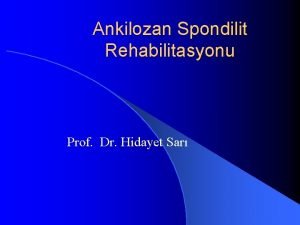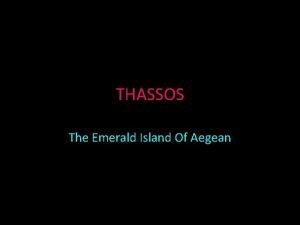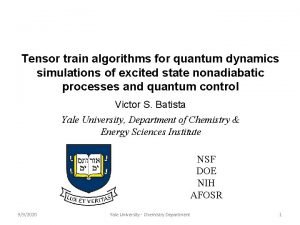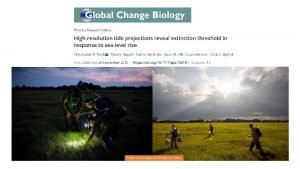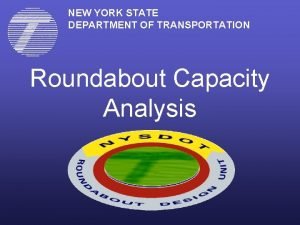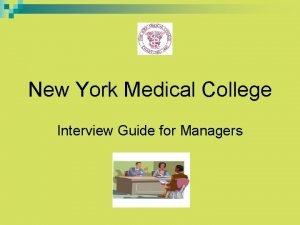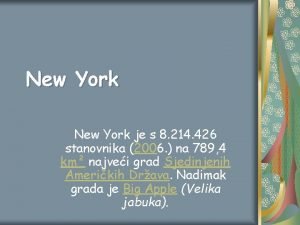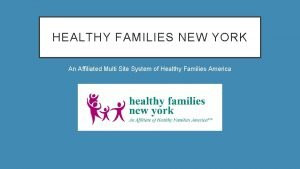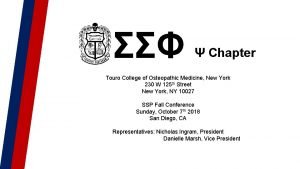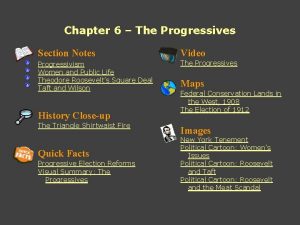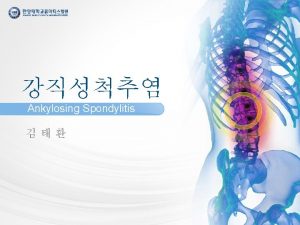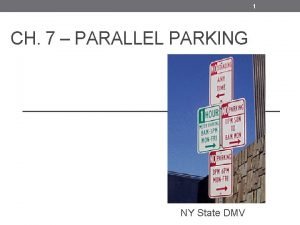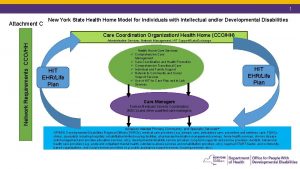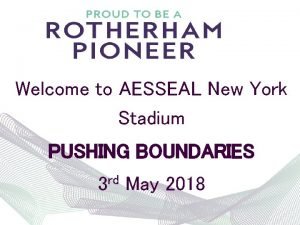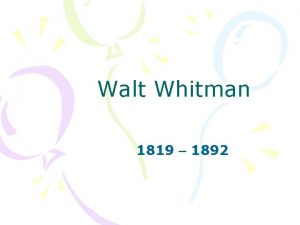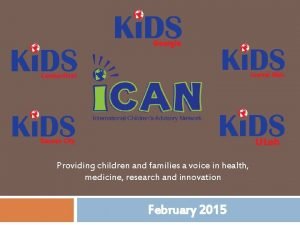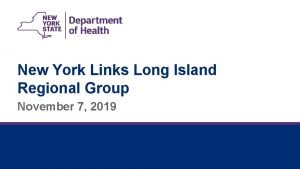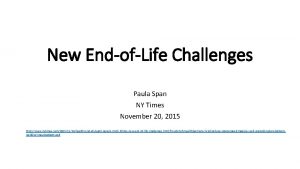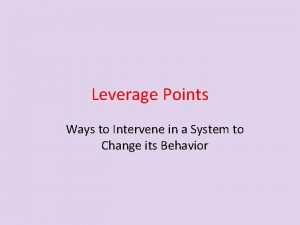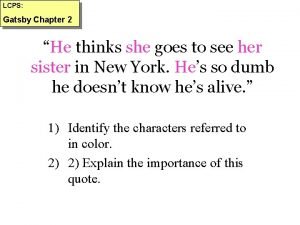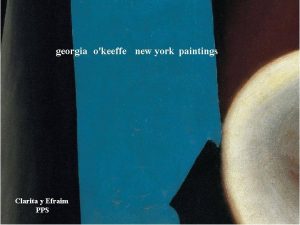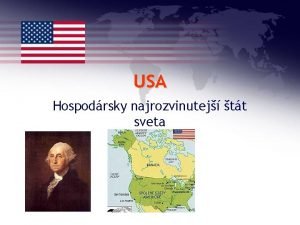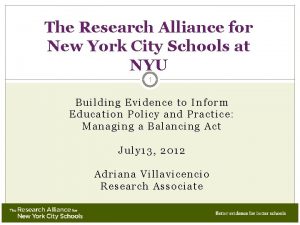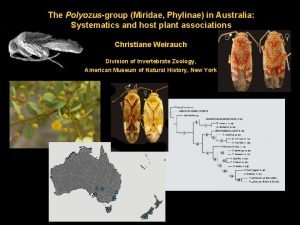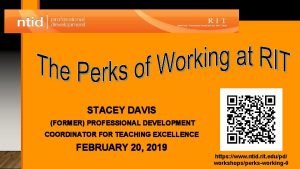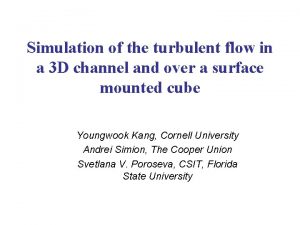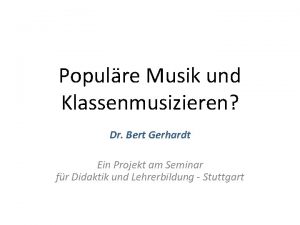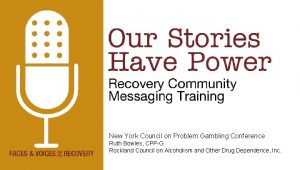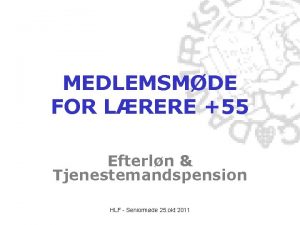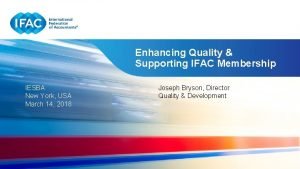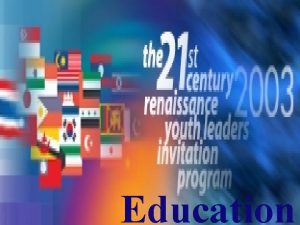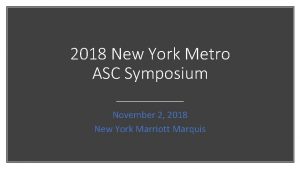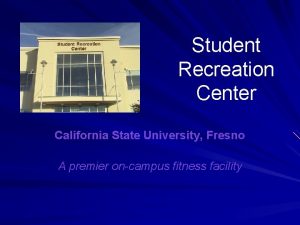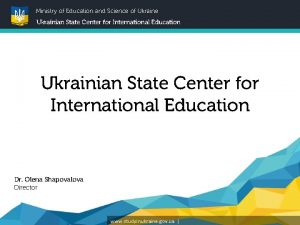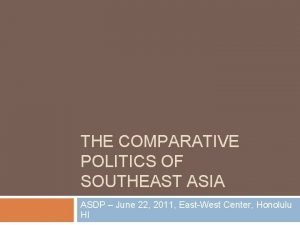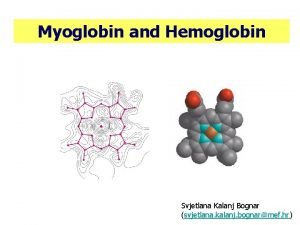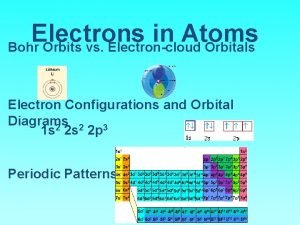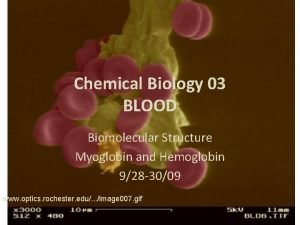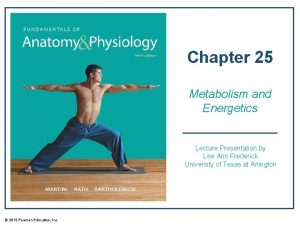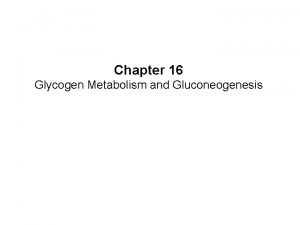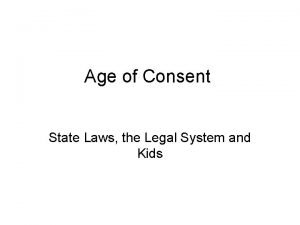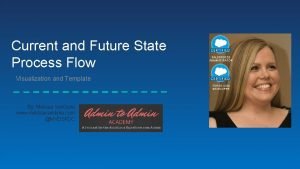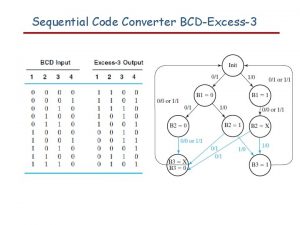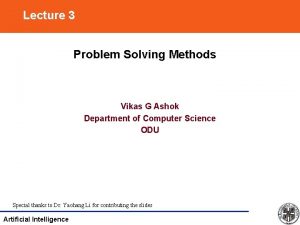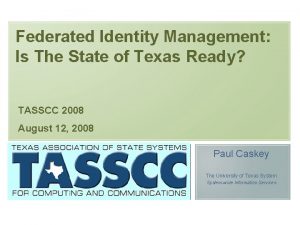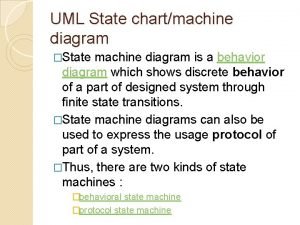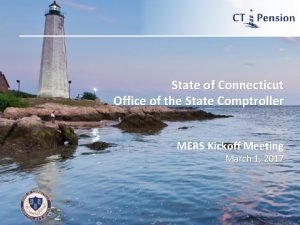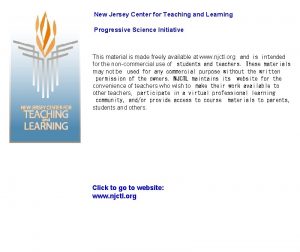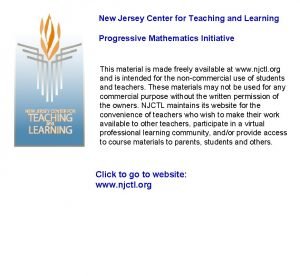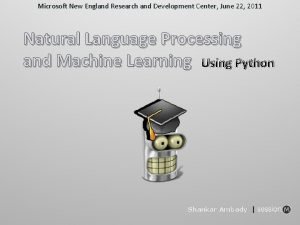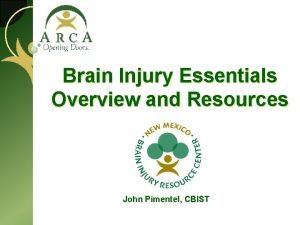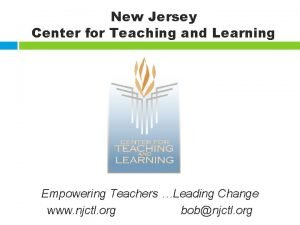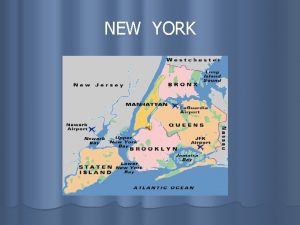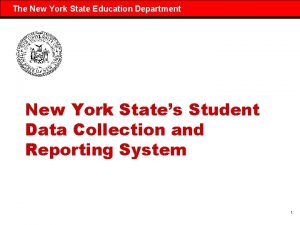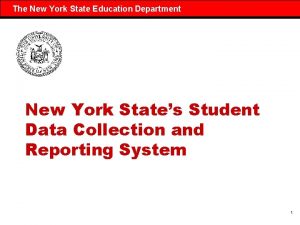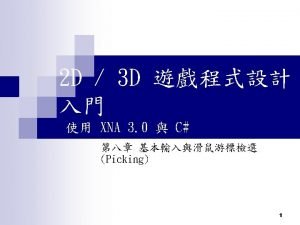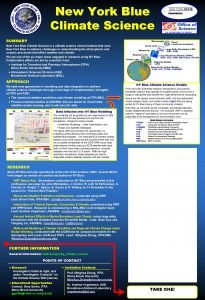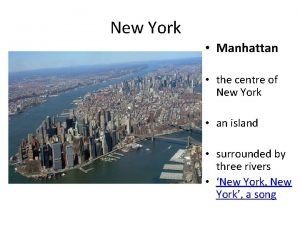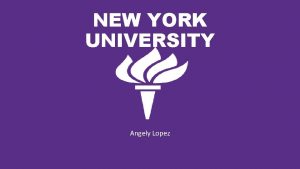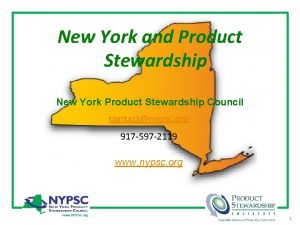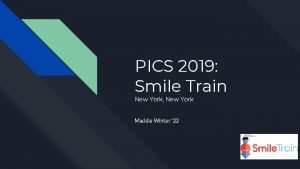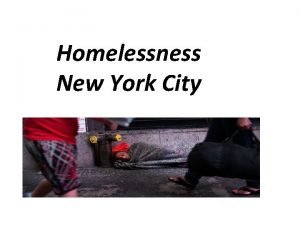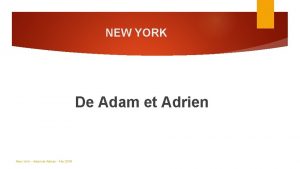R T U New York State Center of




































































































































































- Slides: 164

R T U New York State Center of Excellence in Bioinformatics & Life Sciences Short Course C 16 Ontologies for the Bio-Science Industry: Development & Use Moscone Convention Center, San Francisco, CA - February 20, 2012, 4. 30 -7. 30 PM Werner CEUSTERS, MD Center of Excellence in Bioinformatics and Life Sciences Ontology Research Group Department of Psychiatry University at Buffalo, NY, USA http: //www. org. buffalo. edu/RTU

R T U New York State Center of Excellence in Bioinformatics & Life Sciences 1977 1959 - 2012 2006 Short personal history 1989 2004 1992 2002 1995 1993 1998

R T U New York State Center of Excellence in Bioinformatics & Life Sciences Tonight’s menu • 4: 30: The problems of terminology-based ontologies • 4: 50: Principles of Ontological Realism • 5: 20: From model-theoretic languages to reference-based languages 5: 30 - 6: 00: Dinner • 6: 00: Overview of OBO Foundry ontologies • 6: 20: Documenting adverse events 6: 40: Integrating clinical datasets about orofacial pain 7: 00 – 7: 10: Break • 7: 10: Q&A 3 7: 30 Close of Course

R T U New York State Center of Excellence in Bioinformatics & Life Sciences Why this course, this way ?

R T U New York State Center of Excellence in Bioinformatics & Life Sciences To avoid this: Figure shamelessly stolen without permission from X*, 2009. 5 * source undisclosed to avoid embarrassment of its authors.

R T U New York State Center of Excellence in Bioinformatics & Life Sciences … and this: Figure shamelessly stolen without permission from X*, 2009. 6 * source undisclosed to avoid embarrassment of its authors.

R T U New York State Center of Excellence in Bioinformatics & Life Sciences Two abundantly present fundamental mistakes • You can’t 7 exchange mental illnesses through websites or have Protégé interact with illnesses; • = confusing information with what information is about!

R T U New York State Center of Excellence in Bioinformatics & Life Sciences Two abundantly present fundamental mistakes • Psychological views 8 are as much special kinds of associated problems as associated problems are special kinds of bipolar disorder; • = using ontology tools while ignoring the underlying semantics.

R T U New York State I hope this is a joke Center of Excellence in Bioinformatics & Life Sciences 9 http: //www. mkbergman. com/ Last accessed: Jan 31, 2012 reproduction licensed through: http: //creativecommons. org/licenses/by-nc-sa/2. 5/

R T U New York State Center of Excellence in Bioinformatics & Life Sciences Part 1 The problems of terminology-based ontologies 4: 30 – 4: 50

R T U New York State Center of Excellence in Bioinformatics & Life Sciences Language is ambiguous • ‘I know that you believe that you understood what you think I said, but I am not sure you realize that what you heard is not what I meant. ’ – Robert Mc. Closkey, State Department spokesman (attributed). • http: //www. quotationspage. com/quotes/Robert_Mc. Closkey/

R T U New York State Center of Excellence in Bioinformatics & Life Sciences Language is ambiguous • Often we can figure it out … warning on plastic bag in Miami hotel lobby

R T U New York State Center of Excellence in Bioinformatics & Life Sciences Language is ambiguous • Sometimes, we can not … in Amsterdam hotel elevator

R T U New York State Center of Excellence in Bioinformatics & Life Sciences It is worse for machines. . . We see: “John Doe has a pyogenic granuloma of the left thumb” The machine sees: John Doe has a pyogenic granuloma of the left thumb

R T U New York State Center of Excellence in Bioinformatics & Life Sciences It is worse for machines. . . We see: The XML misunderstanding <record> <patient>John Doe</patient> <diagnosis>pyogenic granuloma of the left thumb</diagnosis> </record> The machine sees: <record> <subject> John Doe </subject> <diagnosis> pyogenic granuloma of the left thumb </diagnosis> </record>

R T U New York State Center of Excellence in Bioinformatics & Life Sciences The clever (? ) business man and his XML card <business-card> <name> John Nitwit </name> Is this the name of the business card <address> or of the business card owner? <street> 524 Moon base avenue </street> <city> Utopia </city> </address> <phone> … </business-card>

R T U New York State Center of Excellence in Bioinformatics & Life Sciences Intermediate conclusion • We need for sure methods and techniques that allow: – people to express exactly what they mean, – people to understand exactly what is communicated to them, – machines to communicate information without any distortion. • If information overload is a problem, we also need methods and techniques that allow machines to understand exactly what is communicated to them.

R T U New York State Center of Excellence in Bioinformatics & Life Sciences Unfortunately … • Traditional terminology alone is not going to do the job, Not even when you express it (naively) in OWL !!! 18 (yes, I am shouting)

R T U New York State Center of Excellence in Bioinformatics & Life Sciences Why not: most terminologies are ‘concept’-based • But what the word ‘concept’ denotes, is usually not clarified and users of it often refer to different entities in a haphazard way: Smith B, Kusnierczyk W, Schober D, Ceusters W. Towards a Reference Terminology for Ontology Research and Development in the Biomedical Domain. Proceedings of KR-MED 2006, Biomedical Ontology in Action, November 8, 2006, Baltimore MD, USA

R T U New York State Center of Excellence in Bioinformatics & Life Sciences SNOMED about diseases and concepts (until 2010) • ‘Disorders are concepts in which there is an explicit or implicit pathological process causing a state of disease which tends to exist for a significant length of time under ordinary circumstances. ’ • And also: “Concepts are unique units of thought”. • Thus: Disorders are unique units of thoughts in which there is a pathological process …? ? ? • And thus: to eradicate all diseases in the world at once we simply should stop thinking ?

R T U New York State Center of Excellence in Bioinformatics & Life Sciences Most terminologies are ‘concept’-based • But what the word ‘concept’ denotes, is usually not clarified and users of it often refer to different entities in a haphazard way: • meaning • idea shared in common by synonymous terms shared in common in the minds of those who use these terms describing meanings • unit of knowledge • universal that what is shared by all and only all entities in reality of a similar sort Smith B, Kusnierczyk W, Schober D, Ceusters W. Towards a Reference Terminology for Ontology Research and Development in the Biomedical Domain. Proceedings of KR-MED 2006, Biomedical Ontology in Action, November 8, 2006, Baltimore MD, USA

R T U New York State Center of Excellence in Bioinformatics & Life Sciences Most terminologies are ‘concept’-based • But what the word ‘concept’ denotes, is usually not clarified and users of it often refer to different entities in a haphazard way, • the result being: chaos Smith B, Kusnierczyk W, Schober D, Ceusters W. Towards a Reference Terminology for Ontology Research and Development in the Biomedical Domain. Proceedings of KR-MED 2006, Biomedical Ontology in Action, November 8, 2006, Baltimore MD, USA

R T U New York State Center of Excellence in Bioinformatics & Life Sciences Some examples

R T U New York State Center of Excellence in Bioinformatics & Life Sciences Border’s classification of medicine: what’s wrong ? • Medicine – Mental health – Internal medicine • Endocrinology – Oversized endocrinology • Gastro-enterology • . . . Refer to the size of the – Pediatrics books that do not fit on –. . . a normal Border’s Bookshop shelf – Oversized medicine 24

R T U New York State Center of Excellence in Bioinformatics & Life Sciences Is this a good idea ? Cover subject matter of papers Cover the form of papers 25

R T U New York State Center of Excellence in Bioinformatics & Life Sciences Principle • A representation should not mix object language and meta language – object language describes the referents in the subject domain – meta language describes the object language 26

R T U New York State Center of Excellence in Bioinformatics & Life Sciences Geographic Locations: a good hierarchy ? • • • • 27 Africa [Z 01. 058] + Americas [Z 01. 107] + Antarctic Regions [Z 01. 158] Arctic Regions [Z 01. 208] Asia [Z 01. 252] + Atlantic Islands [Z 01. 295] + Australia [Z 01. 338] + Cities [Z 01. 433] + Europe [Z 01. 542] + Historical Geographic Locations [Z 01. 586] + Indian Ocean Islands [Z 01. 600] + Oceania [Z 01. 678] + Oceans and Seas [Z 01. 756] + Pacific Islands [Z 01. 782] + • mereological mess • mixture of geographic entities with sociopolitical entities • mixture of space and time

R T U New York State Center of Excellence in Bioinformatics & Life Sciences Geographic Locations [Z 01] • • • • 28 Africa [Z 01. 058] + Americas [Z 01. 107] + Antarctic Regions [Z 01. 158] Arctic Regions [Z 01. 208] Asia [Z 01. 252] + Atlantic Islands [Z 01. 295] + Australia [Z 01. 338] + Cities [Z 01. 433] + Europe [Z 01. 542] + Historical Geographic Locations [Z 01. 586] + Indian Ocean Islands [Z 01. 600] + Oceania [Z 01. 678] + Oceans and Seas [Z 01. 756] + Pacific Islands [Z 01. 782] + • • • • Ancient Lands [Z 01. 586. 035] + Austria-Hungary [Z 01. 586. 117] Commonwealth of Independent States [Z 01. 586. 200] + Czechoslovakia [Z 01. 586. 250] + European Union [Z 01. 586. 300] Germany [Z 01. 586. 315] + Korea [Z 01. 586. 407] Middle East [Z 01. 586. 500] + New Guinea [Z 01. 586. 650] Ottoman Empire [Z 01. 586. 687] Prussia [Z 01. 586. 725] Russia (Pre-1917) [Z 01. 586. 800] USSR [Z 01. 586. 950] + Yugoslavia [Z 01. 586. 980] +

R T U New York State Center of Excellence in Bioinformatics & Life Sciences Geographic Locations [Z 01] • • • • 29 Africa [Z 01. 058] + Americas [Z 01. 107] + Antarctic Regions [Z 01. 158] Arctic Regions [Z 01. 208] Asia [Z 01. 252] + Atlantic Islands [Z 01. 295] + Australia [Z 01. 338] + Cities [Z 01. 433] + Europe [Z 01. 542] + Historical Geographic Locations [Z 01. 586] + Indian Ocean Islands [Z 01. 600] + Oceania [Z 01. 678] + Oceans and Seas [Z 01. 756] + Pacific Islands [Z 01. 782] + • • • • Ancient Lands [Z 01. 586. 035] + Austria-Hungary [Z 01. 586. 117] Commonwealth of Independent States [Z 01. 586. 200] + Czechoslovakia [Z 01. 586. 250] + European Union [Z 01. 586. 300] Germany [Z 01. 586. 315] + Korea [Z 01. 586. 407] Middle East [Z 01. 586. 500] + New Guinea [Z 01. 586. 650] Ottoman Empire [Z 01. 586. 687] Prussia [Z 01. 586. 725] Russia (Pre-1917) [Z 01. 586. 800] USSR [Z 01. 586. 950] + Yugoslavia [Z 01. 586. 980] +

R T U New York State Center of Excellence in Bioinformatics & Life Sciences Principle • A hierarchical structure should not represent distinct hierarchical relations unless they are formally characterized 30

R T U New York State Center of Excellence in Bioinformatics & Life Sciences 2 Diabetes Mellitus in Me. SH 2008 ? Different set of more specific terms when different path from the top is taken. 31

R T U New York State Center of Excellence in Me. SH: Bioinformatics some paths from to Wolfram & Life top Sciences Syndrome All Me. SH Categories Diseases Category Nervous System Diseases Eye Diseases Cranial Nerve Diseases Optic Nerve Diseases Eye Diseases, Hereditary Optic Nerve Diseases Optic Atrophy Male Urogenital Diseases Female Urogenital Diseases and Pregnancy Complications Female Urogenital Diseases Neurodegenerative Diseases Heredodegenerative Disorders, Nervous System Urologic Diseases Kidney Diseases Optic Atrophies, Hereditary 32 Wolfram Syndrome Diabetes Insipidus

R T U New York State Center of Excellence in What would it mean if used in the context of a patient ? Bioinformatics & Life Sciences All Me. SH Categories ? ? ? Diseases Category Nervous System Diseases Eye Diseases Cranial Nerve Diseases Optic Nerve Diseases Eye Diseases, Hereditary has … Optic Nerve Diseases Optic Atrophy Male Urogenital Diseases Female Urogenital Diseases and Pregnancy Complications Female Urogenital Diseases Neurodegenerative Diseases Heredodegenerative Disorders, Nervous System Urologic Diseases Kidney Diseases Optic Atrophies, Hereditary has 33 Wolfram Syndrome Diabetes Insipidus

R T U New York State Center of Excellence in Bioinformatics & Life Sciences Principle • If a particular (individual) is related in a specific way to a ‘class’, it should also be related in the same way to all the ‘superclasses’ of that class – Technically: “… to all the classes that subsume that class” 34

R T U New York State Center of Excellence in Bioinformatics & Life Sciences More examples (Only to be shown if not yet 4. 50 PM)

R T U New York State Center of Excellence in Bioinformatics & Life Sciences Me. SH Tree Structures – 2007 • Body Regions [A 01] – Extremities [A 01. 378] • Lower Extremity [A 01. 378. 610] 36 – Buttocks [A 01. 378. 610. 100] – Foot [A 01. 378. 610. 250] » Ankle [A 01. 378. 610. 250. 149] » Forefoot, Human [A 01. 378. 610. 250. 300] + » Heel [A 01. 378. 610. 250. 510] – Hip [A 01. 378. 610. 400] What’s wrong ? – Knee [A 01. 378. 610. 450] – Leg [A 01. 378. 610. 500] – Thigh [A 01. 378. 610. 750]

R T U New York State Center of Excellence in Bioinformatics & Life Sciences Find the problem SNOMED-RT (2000) SNOMED-CT (2003) DL don’t guarantee you to get parthood right ! 37

R T U New York State Center of Excellence in Bioinformatics & Life Sciences Find the problem terms 38

R T U New York State Find the problem Center of Excellence in Bioinformatics & Life Sciences 39

R T U New York State Center of Excellence in Bioinformatics & Life Sciences Find the problem 40

R T U New York State Center of Excellence in Bioinformatics & Life Sciences SNOMED-CT: abundance of false synonymy bones nose fracture 41

R T U New York State Center of Excellence in Bioinformatics & Life Sciences Coding / Classification confusion A patient with a fractured nasal bone = A patient with a broken nose = A patient with a fracture of the nose 42

R T U New York State Center of Excellence in Bioinformatics & Life Sciences Coding / Classification confusion A patient with a fractured nasal bone = = A patient with a broken nose = = A patient with a fracture of the nose 43

R T U New York State Center of Excellence in Bioinformatics & Life Sciences Summary of Part 1

R T U New York State Center of Excellence in Bioinformatics & Life Sciences Summary of current deficiencies in traditional and formal terminologies (1) • Terms often require “reading in context” • Agrammatical constructions (paper-based indexing) • Semantic drift as one moves between hierarchies • Not (yet) useful for natural language understanding by software (but were not designed for that purpose) 45

R T U New York State Center of Excellence in Bioinformatics & Life Sciences Summary of current deficiencies in traditional and formal terminologies (2) • labels for terms do not correspond with formal meaning • underspecification (leading to erroneous classification in DL-based systems) • overspecification (leading to wrong assumptions with respect to instances) 46

R T U New York State Center of Excellence in Bioinformatics & Life Sciences Take-home message • Concept-based terminology (and standardisation thereof) is there as a mechanism to improve understanding of messages by humans. • It is NOT the right device – to explain why reality is what it is, how it is organised, etc. , (although it is needed to allow communication), – to reason about reality, – to make machines understand what is real, – to integrate across different views, languages, conceptualisations, . . . 47

R T U New York State Center of Excellence in Bioinformatics & Life Sciences Principles of Ontological Realism 4: 50 – 5: 20

R T U New York State Center of Excellence in Bioinformatics & Life Sciences ‘Ontology’ • In philosophy: – Ontology (no plural) is the study of what entities exist and how they relate to each other; – by some philosophers taken to be synonymous with ‘metaphysics’ while others draw distinctions in many distinct ways (the distinctions being irrelevant for this talk) , but almost agreeing on the following classification: • metaphysics – general metaphysics » ontology – special metaphysics – distinct from ‘epistemology’ which is the study of how we can come to know about what exists.

R T U New York State Center of Excellence in Bioinformatics & Life Sciences A legitimate ontological question • Do mental illnesses / disorders / diseases exist? – The answer can, arguably, be ‘no’: • if one does not subscribe to the mind-brain dichotomy: – no mind nothing mental • if one does, but also entertains a strong body-related interpretation of what is an illness, disorder, disease: – STEDMAN (27 th edition): an interruption, cessation, or disorder of body function, system, or organ. – DORLAND: any deviation from or interruption of the normal structure or function of a part, organ, or system of the body as manifested by characteristic symptoms and signs; – WHO: an interconnected set of one or more dysfunctions in one or more body parts, linking to underling genetic factors and to interacting environmental factors and possibly: to a pattern or patterns of response to interventions. – and under the same conditions: ‘yes’: • ‘mental disorder’ would be synonymous with ‘brain disorder’

R T U New York State Center of Excellence in Bioinformatics & Life Sciences A legitimate ontological question • Do mental illnesses / disorders / diseases exist? – The answer can, arguably, be ‘no’: • if one does not subscribe to the mind-brain dichotomy: – no mind nothing mental • if one does, but also entertains a strong body-related interpretation of what is an illness, disorder, disease: – STEDMAN (27 th edition): an interruption, cessation, or disorder of body function, system, or organ. – DORLAND: any deviation from or interruption of the normal structure or function of a part, organ, or system of the body as manifested by characteristic symptoms and signs; – WHO: an interconnected set of one or more dysfunctions in one or more body parts, linking to underling genetic factors and to interacting environmental factors and possibly: to a pattern or patterns of response to interventions. – and under the same conditions: ‘yes’: • ‘mental disorder’ would be synonymous with ‘brain disorder’

R T U New York State Center of Excellence in Bioinformatics & Life Sciences A better phrased ontological question • Do mental illnesses / disorders / diseases exist? • What, if anything at all, do the terms ‘mental illness’, ‘mental disorder’ , … denote?

R T U New York State Center of Excellence in Bioinformatics & Life Sciences A better phrased ontological question • Do mental illnesses / disorders / diseases exist? • What, if anything at all, do the terms ‘mental illness’, ‘mental disorder’ , … denote? terms ‘mental disorder’ ‘person’ ‘UB’ first-order reality

R T U New York State Center of Excellence in Bioinformatics & Life Sciences This is distinct from terminological questions • Terminological question: – What does ‘mental disorder’ mean ?

R T U New York State Center of Excellence in Bioinformatics & Life Sciences This is distinct from terminological questions • Terminological question: – What does ‘mental disorder’ mean ? meaning of ‘mental disorder’

R T U New York State Center of Excellence in Bioinformatics & Life Sciences Terminological approaches raise further questions • Terminological question: – What does ‘mental disorder’ mean ? What are meanings? meaning of ‘mental disorder’ How are these related? Do meanings denote?

R T U New York State Center of Excellence in Bioinformatics & Life Sciences The half-baked semantic/semiotic triangle • does not provide any good answers despite its overwhelming popularity meaning of ‘mental disorder’ Concept ‘mental disorder’ Symbol / Sign / Term Thing / Referent

R T U New York State Center of Excellence in Bioinformatics & Life Sciences The semantic triangle works sometimes fine • Ludwig van Beethoven • that great German composer that became deaf • … concept term ‘Beethoven’ referent

R T U New York State Center of Excellence in Bioinformatics & Life Sciences The semantic triangle works sometimes fine • Beethoven’s symphony dedicated to Bonaparte • the symphony played after the Munich Olympics massacre • … concept term ‘Eroica’ ‘Beethoven's Symphony No. 3’ ‘Beethoven's Opus 55’ referent

R T U New York State Center of Excellence in Bioinformatics & Life Sciences Sometimes the semantic triangle fails • the symphony Beethoven wrote after the tenth • … concept term ‘Beethoven's Symphony No. 11’ referent

R T U New York State Center of Excellence in Bioinformatics & Life Sciences Sometimes the semantic triangle fails • the symphony Beethoven wrote after the tenth • … some hold this term has meaning concept term ‘Beethoven's Symphony No. 11’ referent

R T U New York State Center of Excellence in Bioinformatics & Life Sciences Sometimes the semantic triangle fails • the one assembled by Barry Cooper from fragmentary sketches • Beethoven’s hypothetical symphony • … concept term ‘Beethoven's Symphony No. 10’ referent

R T U New York State Center of Excellence in Bioinformatics & Life Sciences Prehistoric ‘psychiatry’: drapetomania • disease which causes slaves to suffer from an unexplainable propensity to run away • … concept term ‘drapetomania’ referent painting by Eastman Johnson. A Ride for Liberty: The Fugitive Slaves. 1860.

R T U New York State Center of Excellence in Bioinformatics & Life Sciences The questions the triangle raises become trickier • Is … – Beethoven’s 10 th symphony a symphony ? – Beethoven’s 10 th symphony a hypothetical symphony ? – a hypothetical symphony a symphony ? • In medicine, is … – a prevented abortion an abortion ? – an absent nipple a nipple ?

R T U New York State Center of Excellence in Bioinformatics & Life Sciences Ontology should give the answer • In philosophy: – Ontology (no plural) is the study of what entities exist and how they relate to each other;

R T U New York State Center of Excellence in Bioinformatics & Life Sciences Unfortunately, ‘ontology’ denotes ambiguously • In philosophy: – Ontology (no plural) is the study of what entities exist and how they relate to each other; • In computer science and many biomedical informatics applications: – An ontology (plural: ontologies) is a shared and agreed upon conceptualization of a domain;

R T U New York State Center of Excellence in Bioinformatics & Life Sciences Ontology as it should be done • In philosophy: – Ontology (no plural) is the study of what entities exist and how they relate to each other; • In computer science and many biomedical informatics applications: – An ontology (plural: ontologies) is a shared and agreed upon conceptualization of a domain; • The realist view within the Ontology Research Group combines the two: – We use Ontological Realism, a specific methodology that uses ontology as the basis for building high quality ontologies, using reality as benchmark.

R T U New York State Center of Excellence in Bioinformatics & Life Sciences The Terminology / Ontology divide • Terminology: – solves certain issues related to language use, i. e. with respect to how we talk about entities in reality (if any); • Relations between terms / concepts – does not provide an adequate means to represent independent of use what we talk about, i. e. how reality is structured; • Women, Fire and Dangerous Things (Lakoff). • Ontology (of the right sort): – Language and perception neutral view on reality. • Relations between entities in first-order reality 68 This is the ‘terminology / ontology divide’

R T U New York State Center of Excellence in Bioinformatics & Life Sciences Why not ? • Does not take care of universals and particulars appropriately • Concepts not necessarily correspond to something that (will) exist(ed) – Sorcerer, unicorn, leprechaun, . . . • Definitions set the conditions under which terms may be used, and may not be abused as conditions an entity must satisfy to be what it is • Language can make strings of words look as if it were terms – “Middle lobe of left lung” 69

R T U New York State Center of Excellence in Bioinformatics & Life Sciences

R T U New York State Center of Excellence in Bioinformatics & Life Sciences The basis of Ontological Realism 1. There is an external reality which is ‘objectively’ the way it is; 2. That reality is accessible to us; 3. We build in our brains cognitive representations of reality; 4. We communicate with others about what is there, and what we believe there is there. Smith B, Kusnierczyk W, Schober D, Ceusters W. Towards a Reference Terminology for Ontology Research and Development in the Biomedical Domain. Proceedings of KR-MED 2006, Biomedical Ontology in Action, November 8, 2006, Baltimore MD, USA

R T U New York State Center of Excellence in Bioinformatics & Life Sciences Ontological Realism makes three crucial distinctions 1. Between data and what data are about; 2. Between continuants and occurrents; 3. Between what is generic and what is specific. Smith B, Ceusters W. Ontological Realism as a Methodology for Coordinated Evolution of Scientific Ontologies. Applied Ontology, 2010. 72

R T U New York State Center of Excellence in Bioinformatics & Life Sciences 73

York State L 3 Linguistic representations about (1), (2) or (3) R T U New Center of Excellence in Bioinformatics & Life Sciences L 2 Clinicians’ beliefs about (1) Re pr ese nt ati on s First Order Reality L 174 Entities (particular or generic) with objective existence which are not about anything

R T U New York State Center of Excellence in Bioinformatics & Life Sciences A crucial distinction: data and what they are about First. Order Reality is abo ut observation & measurement data organization model development Representation Generic beliefs application 75 use outcome add Δ= (instrument and study optimization) verify further R&D

R T U New York State Center of Excellence in Bioinformatics & Life Sciences Ontological Realism makes crucial distinctions • Between data and what data are about: – Level 1 entities (L 1): • everything what exists or existed • some are referents • some are L 2, some are L 3, none are L 2 and L 3 (‘are’ used informally) – Level 2 entities (L 2): beliefs • all are L 1 • some are about other L 1 -entities but none about themselves – Level 3 entities (L 3): expressions • all are L 1, none are L 2 • some are about other L 1 -entities and some about themselves 76

R T U New York State Center of Excellence in Bioinformatics & Life Sciences Ontological Realism makes crucial distinctions • Between data and what data are about; • Between continuants and occurrents: – obvious differences: • a person versus his life • a disease versus its course • space versus time – more subtle differences: • observation (data-element) versus observing • diagnosis versus making a diagnosis • message versus transmitting a message 77

R T U New York State Center of Excellence in Bioinformatics & Life Sciences Is depression considered a continuant or occurrent? • What do we mean by ‘depression’ ? – The name of some disease ? • continuant – A bout of feelings of being worth nothing, sobbing, appearance of suicidal thoughts, … • occurrent

R T U New York State Center of Excellence in Bioinformatics & Life Sciences Between ‘generic’ and ‘specific’ Generic L 3. Representation L 2. Beliefs (knowledge) L 1. First-order reality ‘person’ ‘drug’ ‘insulin’ DIAGNOSIS INDICATION PATHOLOGICAL STRUCTURE DRUG MOLECULE 79 Specific PERSON DISEASE PORTION OF INSULIN Basic Formal Ontology ‘W. Ceusters’ ‘my sugar’ my doctor’s work plan my doctor’s diagnosis my doctor me my doctor’s computer my NIDDM my blood glucose level Referent Tracking

R T U New York State Center of Excellence in Bioinformatics & Life Sciences From model-theoretic languages to reference-based languages 5: 20 – 5: 30

R T U New York State Center of Excellence in Bioinformatics & Life Sciences Model theoretic semantics (1) • Meaning of traditional logic is based on model theoretic semantics which defines meaning in terms of a model (a. k. a. possible world), a set-theoretic structure that defines a (potentially infinite) set of objects with properties and relations between them. • A model connects language and the world by representing the abstract objects and relations that exist in a possible world. • An interpretation is a mapping from logic to the model that defines predicates extensionally, in terms of the set of tuples of objects that make them true (their extension). – The extension of Red(x) is the set of all red things in the world. – The extension of Father(x, y) is the set of all pairs of objects <A, B> such that A is B’s father. 81

R T U New York State Center of Excellence in Bioinformatics & Life Sciences Model theoretic semantics (2) • Model theoretic semantics gives the truth conditions for a sentence, i. e. a model satisfies a logical sentence iff the sentence evaluates to true in the given model. • The meaning of a sentence is therefore defined as the set of all possible worlds in which it is true. 82

R T U New York State Center of Excellence in Bioinformatics & Life Sciences However … • Generic terms used to denote specific entities do not have enough referential capacity – Usually enough to convey that some specific entity is denoted, – Not enough to be clear about which one in particular. • For many ‘important’ entities, unique identifiers are used: – – UPS parcels Patients in hospitals VINs on cars …

R T U New York State Center of Excellence in Bioinformatics & Life Sciences Fundamental goals of ‘our’ Referent Tracking explicit reference to the concrete individual entities relevant to the accurate description of some portion of reality, . . . Ceusters W, Smith B. Strategies for Referent Tracking in Electronic Health Records. J Biomed Inform. 2006 Jun; 39(3): 362 -78.

R T U New York State Center of Excellence in Bioinformatics & Life Sciences Method: numbers instead of words – Introduce an Instance Unique Identifier (IUI) for each relevant particular (individual) entity 78 Ceusters W, Smith B. Strategies for Referent Tracking in Electronic Health Records. J Biomed Inform. 2006 Jun; 39(3): 362 -78.

R T U New York State Center of Excellence in Bioinformatics & Life Sciences Fundamental goals of ‘our’ Referent Tracking Use these identifiers in expressions using a language that acknowledges the structure of reality: e. g. : a yellow ball: then not : yellow(#1) and ball(#1) rather: #1: the ball #2: #1’s yellow Then still not: ball(#1) and yellow(#2) and hascolor(#1, #2) but rather: Strong foundations instance-of(#1, ball, since t 1) in realism-based instance-of(#2, yellow, since t 2) ontology inheres-in(#1, #2, since t 2)

R T U New York State Center of Excellence in Bioinformatics & Life Sciences The shift envisioned • From: – ‘this man is a 40 year old patient with a stomach tumor’ • To (something like): – ‘this-1 on which depend this-2 and this-3 has this-4’, where • • • this-1 this-2 this-3 this-4 this-5 … instance. Of quality. Of instance. Of role. Of instance. Of part. Of human being … age-of-40 -years … this-1 … patient-role … this-1 … tumor … this-5 … stomach … this-1 …

R T U New York State Center of Excellence in Bioinformatics & Life Sciences The shift envisioned • From: – ‘this man is a 40 year old patient with a stomach tumor’ • To (something like): – ‘this-1 on which depend this-2 and this-3 has this-4’, where • • • this-1 this-2 this-3 this-4 this-5 … instance. Of quality. Of instance. Of role. Of instance. Of part. Of human being … age-of-40 -years … this-1 … patient-role … this-1 … tumor … this-5 … stomach … this-1 … denotators for particulars

R T U New York State Center of Excellence in Bioinformatics & Life Sciences The shift envisioned • From: – ‘this man is a 40 year old patient with a stomach tumor’ • To (something like): – ‘this-1 on which depend this-2 and this-3 has this-4’, where • • • this-1 this-2 this-3 this-4 this-5 … instance. Of quality. Of instance. Of role. Of instance. Of part. Of human being … age-of-40 -years … this-1 … patient-role … this-1 … tumor … this-5 … stomach … this-1 … denotators for appropriate relations

R T U New York State Center of Excellence in Bioinformatics & Life Sciences The shift envisioned • From: – ‘this man is a 40 year old patient with a stomach tumor’ • To (something like): – ‘this-1 on which depend this-2 and this-3 has this-4’, where • • • this-1 this-2 this-3 this-4 this-5 … instance. Of quality. Of instance. Of role. Of instance. Of part. Of human being age-of-40 -years this-1 patient-role this-1 tumor this-5 stomach this-1 … … … … denotators for universals … … or particulars

R T U New York State Center of Excellence in Bioinformatics & Life Sciences The shift envisioned • From: – ‘this man is a 40 year old patient with a stomach tumor’ • To (something like): – ‘this-1 on which depend this-2 and this-3 has this-4’, where • • • this-1 this-2 this-3 this-4 this-5 … instance. Of quality. Of instance. Of role. Of instance. Of part. Of human being age-of-40 -years this-1 patient-role this-1 tumor this-5 stomach this-1 … … … … … time stamp in case of continuants

R T U New York State Center of Excellence in Bioinformatics & Life Sciences Relevance: the way RT-compatible EHRs ought to interact with representations of generic portions of reality instance-of at t caused #105 by

R T U New York State Center of Excellence in Bioinformatics & Life Sciences Overview of OBO Foundry ontologies 6: 00 – 6: 20

R T U New York State Center of Excellence in Bioinformatics & Life Sciences The OBO Foundry • a family of interoperable biomedical reference ontologies built around the Gene Ontology (GO) at its core and using the same principles as the GO • a modular annotation catalogue of English phrases • each module created by experts from the corresponding scientific community • http: //obofoundry. org

R T U New York State Center of Excellence in Bioinformatics & Life Sciences

R T U New York State Center of Excellence in Bioinformatics & Life Sciences OBO Website

R T U New York State Center of Excellence in Bioinformatics & Life Sciences Basic Formal Ontology: an upper ontology based on Ontological Realism

R T U New York State Center of Excellence in Bioinformatics & Life Sciences A useful parallel: Alberti’s grid Ontological theory representation reality

R T U New York State Center of Excellence in Bioinformatics & Life Sciences Basic components of the BFO view on the world • The world consists of – entities that are • Either particulars or universals; • Either occurrents or continuants; and, – relationships between these entities of the form • Either dependent or independent; • <particular , universal> • <particular , particular> • <universal , universal> e. g. is-instance-of, lacks e. g. is-member-of, is-part-of e. g. isa (is-subtype-of) Smith B, Kusnierczyk W, Schober D, Ceusters W. Towards a Reference Terminology for Ontology Research and 99 Development in the Biomedical Domain. Proceedings of KR-MED 2006, November 8, 2006, Baltimore MD, USA

R T U New York State Center of Excellence in Bioinformatics & Life Sciences The example to work (partially) out: ‘walking’ process living creature Is_a function leg human being Instance-of at t part-of at t 100 me Instance-of at t to make me walk Has-function at t Hasmy left leg Participant at t Has-participant at t 2 Is_a leg moving walking Instance-of this leg moving part-of Instance-of Is-realized. In at t this walking

R T U New York State Center of Excellence in Bioinformatics & Life Sciences The parallel with molecular phenomena molecular structure Is_a process function protein complex Instance-of at t part-of at t 101 this PComp Instance-of at t regulate mitosis Is_a mitosis cell life Instance-of this mitosis Has-function at t Hasthis protein Participant at t Has-participant at t 2 part-of Instance-of Is-realized. In at t this cell’s life

R T U New York State Center of Excellence in Bioinformatics & Life Sciences 1 Particulars Individual entities that carry identity and preserve their identity over time to make me walk this leg moving my left leg 102 me this walking

R T U New York State Center of Excellence in Bioinformatics & Life Sciences 1 Universals process living creature function leg human being leg moving walking Entities which exist “in” the particulars amongst which there is a relation of similarity not found with other particulars 103

R T U New York State Center of Excellence in Bioinformatics & Life Sciences Particulars versus Universals some universal for every universal there is or has been at least one instance. Of … entities on either site cannot ‘cross’ this boundary 104 some particular every particular is an instance of at least one universal

R T U New York State Center of Excellence in Bioinformatics & Life Sciences 1 Particulars and Universals process living creature function leg human being Instance-of at t to make me walk leg moving walking Instance-of this leg moving Instance-of my left leg 105 me this walking

R T U New York State Center of Excellence in Bioinformatics & Life Sciences The importance of temporal indexing malignant tumor benign tumor instance. Of at t 1 instance. Of at t 2 this-4 106 part. Of at t 1 part. Of at t 2 stomach instance. Of at t 2 instance. Of at t 1 this-1’s stomach

R T U New York State Center of Excellence in Bioinformatics & Life Sciences 2 Continuants and Occurrents process living creature function leg human being Instance-of at t to make me walk leg moving walking Instance-of this leg moving Instance-of my left leg 107 me this walking

R T U New York State Center of Excellence in Bioinformatics & Life Sciences 2 Continuants function leg human being Instance-of at t my left leg 108 me Instance-of at t to make me walk Continuants are entities which endure (=continue to exist) while undergoing different sorts of changes, including changes of place. While they exist, they exist “in total”.

R T U New York State Center of Excellence in Bioinformatics & Life Sciences Continuants preserve identity while changing 2 human being living creature me Instance-of in 1960 child me Instance-of since 1980 adult animal caterpillar 109 butterfly t

R T U New York State Center of Excellence in Bioinformatics & Life Sciences 2 Occurrents are changes. Occurrents unfold themselves during temporal phases. At any point in time, they exist only in part. 110 leg moving walking Instance-of this leg moving Instance-of this walking

R T U New York State Center of Excellence in Bioinformatics & Life Sciences 3 Independent versus dependent process living creature Is_a function leg human being Instance-of at t to make me walk Is_a leg moving walking Instance-of this leg moving Instance-of my left leg 111 me this walking

R T U New York State Center of Excellence in Bioinformatics & Life Sciences 3 Independent versus dependent Independent entities Do not require any other entity to exist to enable their own existence Dependent entities Require the existence of another entity for their existence to make me walk this leg moving my left leg 112 me this walking

R T U New York State Center of Excellence in Bioinformatics & Life Sciences 3 Independent versus dependent Independent entities Do not require any other entity to exist to enable their own existence Independent continuants my left leg 113 me Dependent entities Require the existence of another entity for their existence to make me walk Dependent continuants this leg moving Occurrents (are all dependent) this walking

R T U New York State Center of Excellence in Bioinformatics & Life Sciences 3 Dependent continuants • Realized – Quality: redness (of blood) • Realizable – Function: – Role: – Power: – Disposition: 114 to flex (of knee joint) student boss brittleness (of a bone)

R T U New York State Center of Excellence in Bioinformatics & Life Sciences 3 Dependent continuants occurrents • Realized – Quality: redness (of blood) • Realizable – Function: – Role: – Power: – Disposition: 115 Realizations to flex (of knee joint) student boss brittleness (of a bone) flexing studying ordering breaking

R T U New York State Center of Excellence in Bioinformatics & Life Sciences Sorts of relations Uto. U: isa, part. Of, … Unconstrained reasoning U 1 U 2 Pto. U: instance. Of, lacks, denotes… OWL-DL reasoning Pto. P: part. Of, denotes, subclass. Of, … P 1 116 P 2

R T U New York State Center of Excellence in Bioinformatics & Life Sciences Part-of different for continuants and occurrents process living creature Is_a leg human being Instance-of at t part-of at t 117 me Is_a leg moving Instance-of at t walking Instance-of this leg moving part-of Instance-of my left leg this walking

R T U New York State Center of Excellence in Bioinformatics & Life Sciences Part-of can be generalized, … with care ! living creature Is_a leg human being Instance-of at t part-of at t 118 me Instance-of at t C part_of C 1 = [def] for all c, t, if Cct then there is some c 1 such that C 1 c 1 t and c part_of c 1 at t. my left leg Cct = c instance-of C at t

R T U New York State Center of Excellence in Bioinformatics & Life Sciences Part-of can be generalized, … with care ! living creature Is_a human being Instance-of at t part-of at t 119 me ? leg Part-of Instance-of at t C part_of C 1 = [def] for all c, t, if Cct then there is some c 1 such that C 1 c 1 t and c part_of c 1 at t. my left leg Cct = c instance-of C at t

R T U New York State Center of Excellence in Bioinformatics & Life Sciences Part-of can be generalized, … with care ! living creature Is_a human being Instance-of at t part-of at t 120 me ? leg Part-of Instance-of at t my left leg • Horse legs are not parts of human beings • Amputated legs are not parts of human beings • ‘Canonical leg is part of canonical human being’, but…, there are (very likely) no such particulars • …

R T U New York State Center of Excellence in Bioinformatics & Life Sciences The essential pieces dependent continuant material object t history me … at t my life my 4 D STR located-in at t some spatial region temporal region t occupies projects. On at t 121 spatial region instance. Of t participant. Of at t some quality spacetime region projects. On some temporal region

R T U New York State Center of Excellence in Bioinformatics & Life Sciences OBO Foundry ontologies in BFO-dress RELATION TO TIME GRANULARITY CONTINUANT INDEPENDENT ORGAN AND ORGANISM Organism (NCBI Taxonomy) CELL AND CELLULAR COMPONENT Cell (CL) MOLECULE OCCURRENT DEPENDENT Anatomical Organ Entity Function (FMA, (FMP, CPRO) Phenotypic Biological Process CARO) Quality (GO) (Pa. TO) Cellular Component Function (FMA, GO) (GO) Molecule (Ch. EBI, SO, Rna. O, Pr. O) Molecular Function (GO) Molecular Process (GO) 122

R T U New York State Center of Excellence in Bioinformatics & Life Sciences Ontology of General Medical Science First ontology in which the L 1/L 2/L 3 distinction is used Scheuermann R, Ceusters W, Smith B. Toward an Ontological Treatment of Disease and Diagnosis. 2009 AMIA Summit on Translational Bioinformatics, San Francisco, California, March 15 -17, 2009; : 116 -120. Omnipress ISBN: 0 -9647743 -7 -2

R T U New York State Center of Excellence in Bioinformatics & Life Sciences Goal of OGMS • To be a consistent, logical and extensible framework (ontology) for the representation of – features of disease – clinical processes – results

R T U New York State Center of Excellence in Bioinformatics & Life Sciences Motivation • Clarity about: – disease etiology and progression – disease and the diagnostic process – phenotype and signs/symptoms

R T U New York State Center of Excellence in Bioinformatics & Life Sciences Approach • a disease is a disposition rooted in a physical disorder in the organism and realized in pathological processes. produces etiological process bears disorder realized_in disposition pathological process produces diagnosis interpretive process produces signs & symptoms participates_in abnormal bodily features recognized_as

R T U New York State Center of Excellence in Bioinformatics & Life Sciences Cirrhosis - environmental exposure • • Etiological process - phenobarbitolinduced hepatic cell death – produces Disorder - necrotic liver – bears Disposition (disease) - cirrhosis – realized_in Pathological process - abnormal tissue repair with cell proliferation and fibrosis that exceed a certain threshold; hypoxia-induced cell death – produces Abnormal bodily features – recognized_as Symptoms - fatigue, anorexia Signs - jaundice, splenomegaly • • Symptoms & Signs – used_in Interpretive process – produces Hypothesis - rule out cirrhosis – suggests Laboratory tests – produces Test results – documentation of elevated liver enzymes in serum – used_in Interpretive process – produces Result - diagnosis that patient X has a disorder that bears the disease cirrhosis

R T U New York State Center of Excellence in Bioinformatics & Life Sciences Foundational Terms (1) • Disorder =def. – A causally linked combination of physical components that is – (a) clinically abnormal and – (b) maximal, in the sense that it is not a part of some larger such combination. • Pathological Process =def. – A bodily process that is a manifestation of a disorder and is clinically abnormal.

R T U New York State Center of Excellence in Bioinformatics & Life Sciences Clinically abnormal • - something is clinically abnormal if: – (1) is not part of the life plan for an organism of the relevant type (unlike aging or pregnancy), – (2) is causally linked to an elevated risk either of pain or other feelings of illness, or of death or dysfunction, and – (3) is such that the elevated risk exceeds a certain threshold level.

R T U New York State Center of Excellence in Bioinformatics & Life Sciences Foundational Terms (2) • Disorder =def. – A causally linked combination of physical components that is (a) clinically abnormal and (b) maximal, in the sense that it is not a part of some larger such combination. • Pathological Process =def. – A bodily process that is a manifestation of a disorder and is clinically abnormal. • Disease =def. – A disposition (i) to undergo pathological processes that (ii) exists in an organism because of one or more disorders in that organism.

R T U New York State Center of Excellence in Bioinformatics & Life Sciences Diagnosis • Clinical Picture =def. – A representation of a clinical phenotype that is inferred from the combination of laboratory, image and clinical findings about a given patient. • Diagnosis =def. – A conclusion of an interpretive process that has as input a clinical picture of a given patient and as output an assertion to the effect that the patient has a disease of such and such a type.

R T U New York State Center of Excellence in Bioinformatics & Life Sciences Documenting adverse events 6: 20 – 6: 40

R T U New York State Center of Excellence in Bioinformatics & Life Sciences Re. MINE Project Ceusters W, Capolupo M, Smith B, De Moor G. An Evolutionary Approach to the Representation of Adverse Events. In: Medical Informatics 133 Europe 2009, Sarajevo, Bosnia and Herzegovina, August 31, 2009. Studies in health technology and informatics 150; : 537 -541.

R T U New York State Center of Excellence in Bioinformatics & Life Sciences Ontology development in Re. MINE support annotation Re. MINE Taxonomies Description of specific adverse event domains (childbirth, patient transfer, . . ) as cognized by human beings support reasoning Re. MINE Adverse Event Domain Ontology Re. MINE Application Ontology Ontologies higher order logic Realism-based, purpose independent representation of the portion of reality described in the taxonomies 134 description logic Purpose dependent reformulations of the parts of RAEDO which are relevant for a specific domain

R T U New York State Center of Excellence in Bioinformatics & Life Sciences Re. MINE Taxonomy Annotated Events Risk Manager’s Event Administration System 135

R T U New York State Center of Excellence in Bioinformatics & Life Sciences Re. MINE’s notion of adverse event 1. an ‘incident [that] occurred during the past and [is] documented in a database of adverse events’ – Stefano Arici, Paolo Bertele. Re. MINE Deliverable D 4. 1 – RAPS Taxonomy: approach and definition. V 1. 0 (Final) August 8, 2008. (p 21) … which is a ‘perdurant’ - ibidem (p 26) … ‘that occurs to a patient’ - ibidem (p 23) 2. an expectation of some future happening that can be prevented - ibidem (p 23) 136

R T U New York State Center of Excellence in Bioinformatics & Life Sciences Terminologists agree, ontologists think … • Can something which is an incident be at the same time an expectation ? • Can something which is an incident a time t, later become an adverse event simply because it [? ] has been entered in a database ? • Can adverse events really occur in software ? • … 137

R T U New York State Center of Excellence in Bioinformatics & Life Sciences Intermediate conclusion • The Re. MINE taxonomy (and all concept-based terminologies and ‘ontologies’ in general) provides a distorted view of reality. • For good reasons: the distortion is such that – it reflects a pragmatic view on what is relevant for the purposes it is designed, – it does away with complexities that do not help human beings in doing a better job. • But with some negative consequences: 138 – reusability out of the Re. MINE context is hampered, – integration with other descriptive systems becomes cumbersome, and – advanced reasoning turns out to be impossible.

R T U New York State Center of Excellence in Bioinformatics & Life Sciences Using the 3 levels and the particular/universal/class distinctions • Level 1: – #1: an incident that happened in the past; • Level 2: – #2: the interpretation by some cognitive agent that #1 is an adverse event; – #3: the expectation by some cognitive agent that similar incidents might happen in the future; • Level 3: – #4: an entry in the adverse event database concerning #1; – #5: an entry in some other system about #3 for mitigation or prevention purposes. 139

R T U New York State Center of Excellence in Bioinformatics & Life Sciences Allows appropriate error management • Some possibilities: 1. #1 with unjustified absence of #2: • #1 was not perceived at all, or not assessed as being an adverse event 2. Unjustified presence of #2: • There was no #1 at all, or #1 was not an adverse event 3. Unjustified absence of #4 • Same reasons as under (1) above • Justified presence of #2 but not reported in the database – … 140 Ceusters W, Smith B. A Realism-Based Approach to the Evolution of Biomedical Ontologies. Proceedings of AMIA 2006, Washington DC, 2006; : 121 -125.

R T U New York State Center of Excellence in Bioinformatics & Life Sciences Part of the Re. MINE Domain Ontology 141

R T U New York State Center of Excellence in Bioinformatics & Life Sciences Higher order logical representation • an incident (#1) that happened at time t 2 to a patient (#2) after some intervention (#3 at t 1) • is judged at t 3 to be an adverse event, thereby giving rise to a belief (#4) about #1 on • the part of some person (#5, a caregiver as of time t 6). • This requires the introduction (at t 4) of an entry (#6) in the adverse event database (#7, installed at t 0). 142

R T U New York State Center of Excellence in Bioinformatics & Life Sciences Advantages • Synchronisation of two distinct representations of the same reality: – taxonomies: • user-oriented view • data annotation – ontologies: • realism-based view • unconstrained reasoning • Domain ontology compatible with OBO-Foundry ontologies: – no overlap, – easier to re-use. • Not only tracking of incidents, but also: 143 – how well individual clinicians and organizations manage adverse events, – how well one learns from past experiences.

R T U New York State Center of Excellence in Bioinformatics & Life Sciences Integrating clinical datasets about orofacial pain 6: 40 – 7: 00

R T U New York State Center of Excellence in Bioinformatics & Life Sciences Acknowledgement The work described is funded in part by grant 1 R 01 DE 021917 -01 A 1 from the National Institute of Dental and Craniofacial Research (NIDCR). The content of this presentation is solely the responsibility of the author and does not necessarily represent the official views of the NIDCR or the National Institutes of Health. 145

R T U New York State Center of Excellence in Bioinformatics & Life Sciences Collaborators Werner Ceusters – Richard Ohrbach UB (PIs) Vishar Aggarwal Manchester, UK 146 Joanna Zakrzewska London, UK Mike T. John – Eric L. Schiffman University of Minnesota Thomas List Malmö, Sweden Rafael Benoliel Hadassah, Israel

R T U New York State Center of Excellence in Bioinformatics & Life Sciences Background (1) • July 2008, Toronto: – the International RDC/TMD Consortium Network identified a need to incorporate the RDC/TMD diagnostic taxonomy into a comprehensive orofacial pain taxonomy. • April, 2009, Miami: – ‘The International Consensus Workshop: Convergence on an Orofacial Pain Taxonomy’ participants decided that an adequate treatment of the ontology of pain in general, and orofacial pain in particular, together with an appropriate terminology, is mandatory to advance the state of the art in diagnosis, treatment and prevention. 147 Ohrbach R, List T, Goulet J, Svensson P. Recommendations from the International Consensus Workshop: Convergence on an Orofacial Pain Taxonomy. Journal of Oral Rehabilitation. 2010.

R T U New York State Center of Excellence in Bioinformatics & Life Sciences Background (2) • The following consecutive steps were proposed: 148 1. study the terminology and ontology of pain as currently defined, 2. find ways to make individual data collections more useful for international research, 3. develop an ontology for integrating knowledge and data over all the known basic and clinical science domains concerning TMD and its relationship to complex disorders, and 4. expand this ontology to cover all pain-related disorders.

R T U New York State Center of Excellence in Bioinformatics & Life Sciences Potential impact • Improvements anticipated: – Better assessment of quality of life and disablement in relation to pain, – Increasing the reliability and validity of the Research Diagnostic Criteria for TMD, – Better methods and tools for unambiguous data annotation and classification for pain; • Expected changes in the field: – Better use of self-report assessment approaches for functional limitation and psychosocial disability related to pain, – Widespread use of an adequate terminology and ontology of disease and disease perception. 149

R T U New York State Center of Excellence in Bioinformatics & Life Sciences Project goals • to obtain better insight into: – the complexity of pain disorders, pain types as well as pain-related disablement and – its association with mental health and quality of life, • to develop an ontology for this subdomain incorporating a broad array of measures consistent with a biopsychosocial perspective regarding pain, • to integrate five existing datasets that broadly encompass the major types of pain in the oral and associated regions. 150

R T U New York State Center of Excellence in Bioinformatics & Life Sciences Specific Aims 1. describe the portions of reality covered by the five datasets by means of a realism-based ontology (OPMQo. L), 2. design bridging axioms required to express the data dictionaries of the datasets in terms of the OPMQo. L and translate these axioms in the query languages used by the underlying databases, 3. validate OPMQo. L by querying the datasets with and without using the ontology and by comparing the results in function of the clinical question identified, 4. document the development and validation approach in a way that other groups can re-use and expand OPMQo. L, and use our approach in other domains. 151

R T U New York State Center of Excellence in Bioinformatics & Life Sciences Starting point: IASP definition for ‘pain’ • ‘an unpleasant sensory and emotional experience associated with actual or potential tissue damage, or described in terms of such damage’; • what asserts: – a common phenomenology (‘unpleasant sensory and emotional experience’) to all instances of pain, – the recognition of three distinct subtypes of pain involving, respectively: 1. actual tissue damage, 2. what is called ‘potential tissue damage’, and 3. a description involving reference to tissue damage. 152

R T U New York State Center of Excellence in Bioinformatics & Life Sciences Five pain-related phenomena 153 Smith B, Ceusters W, Goldberg LJ, Ohrbach R. Towards an Ontology of Pain. In: Mitsu Okada (ed. ), Proceedings of the Conference on Logic and Ontology, Tokyo: Keio University Press, February 2011: 23 -32.

R T U New York State Center of Excellence in Bioinformatics & Life Sciences Pain with concordant tissue damage =def. : (1) a bodily process in an organism S involving two integrated levels: (1 a) activation of the nociceptive system including the pain-associated emotion-generating brain components of S, and (1 b) a simultaneous sensory and aversive experience on the part of S that is (2) caused by damage to tissue located in a region R of the body of the subject S, (3) experienced by S as being caused by this damage, (4) such as to involve an aversive reaction on the part of S directed towards that which is presumed by S to be causing this damage, (5) concordant with the tissue damage on both levels (1 a) and (1 b), and also (6) such that the sensory experience is sufficiently intense to communicate the presence of tissue damage to the subject. 154 Smith B, Ceusters W, Goldberg LJ, Ohrbach R. Towards an Ontology of Pain. In: Mitsu Okada (ed. ), Proceedings of the Conference on Logic and Ontology, Tokyo: Keio University Press, February 2011: 23 -32.

R T U New York State Center of Excellence in Bioinformatics & Life Sciences Tissue damage sensing and pain generation 155 David Julius & Allan I. Basbaum. Molecular mechanisms of nociception. Nature Vol 413, 13 Sept 2001

R T U New York State Center of Excellence in Bioinformatics & Life Sciences Current general definition for ‘pain’ (1) • pain =def. a bodily process in an organism S involving two integrated levels: – (a) activation of the nociceptive system and associated emotion generating brain components of S, and – (b) a simultaneous aversive sensory and emotional experience on the part of S, – where (b) is phenomenologically similar to the sort of aversive experience involved in PCT pain. 156 Smith B, Ceusters W, Goldberg LJ, Ohrbach R. Towards an Ontology of Pain. In: Mitsu Okada (ed. ), Proceedings of the Conference on Logic and Ontology, Tokyo: Keio University Press, February 2011: 23 -32.

R T U New York State Center of Excellence in Bioinformatics & Life Sciences Current general definition for ‘pain’ (2) • ‘phenomenologically similar’ means inter alia: – (1) that the experience is ‘of’ or is ‘targeted towards’ some region R of the body of S, so that all pain is in this sense (and however diffusely) localized; – (2) that the experience involves a dimension of unpleasantness which – as is shown by the case of pain asymbolia – is not necessarily of the sort that involves suffering or aversion on the part of the subject S. 157 Smith B, Ceusters W, Goldberg LJ, Ohrbach R. Towards an Ontology of Pain. In: Mitsu Okada (ed. ), Proceedings of the Conference on Logic and Ontology, Tokyo: Keio University Press, February 2011: 23 -32.

R T U New York State Center of Excellence in Bioinformatics & Life Sciences Considered datasets • ‘US Dataset’ (724 patients) resulted from the NIH funded RDC/TMD Validation Project, • ‘Hadassah Dataset’ (306 patients) from the Orofacial Pain Clinic at the Faculty of Dentistry, Hadassah, • ‘German Dataset’ (416 patients) of patients seeking treatment for orofacial pain at the Department of Prosthodontics and Materials Sciences, University of Leipzig, • ‘Swedish Dataset’of 46 consecutive Atypical Odontalgia (AO) patients recruited from 4 orofacial pain clinics in Sweden as well as data about age- and gender-matched control patients, 35 of which being painless and 41 being TMD patients, • ‘UK Dataset’ (168 patients) of facial pain of non dental origin present for a minimum of three months. 158

R T U New York State Center of Excellence in Bioinformatics & Life Sciences Challenges • (1) which terms used in the domain correspond with real entities, • (2) what real entities need to exist for certain signs and symptoms to manifest themselves, • (3) to what degree do distinct pain disorders lead to similar types of signs and symptoms, and • (4) to what extent can individual patients be suffering from distinct pain disorders at the same time, yet exhibiting manifestations that can be explained by the presence of only one particular pain disorder. 159

R T U New York State Center of Excellence in Bioinformatics & Life Sciences Mapping assessment instrument terms, ontology and patient cases 160

New York State 1. . * RTerminology T U component uses used-for Center of Excellence in terminology Bioinformatics & Life Sciences 0. . * 1 uses 1. . * data dictionary 1. . * term part-of 0. . * 1. . * has-part 0. . * 1 concept 0. . 1 expresses 1 means Ontology component * used-in uses * used-for Data component used-for data collection * broader 1. . * 0. . 1 data item 0. . * representational artifact entity 0. . 1 denoted by denotes 1 uses assessment instrument ontology data collection ontology used-for 1 1 1. . * narrower 0. . * corresponds-to used-for 1. . 1 1. . expressed-by assessment instrument 1. . * uses 0. . * application ontology bridging axiom denotator 1. . x 1 uses 1. . * used-for ontology 1 reference ontology

R T U New York State Center of Excellence in Bioinformatics & Life Sciences The positive effects of appropriate mappings

R T U New York State Center of Excellence in Bioinformatics & Life Sciences The positive effects of appropriate mappings • identification of ontological relations prior to statistical correlation: – – ch 1 and ch 4 ch 1 and ch 5 ch 1 and ch 2 … • Contributes to answering ‘Q 4: how can we make analysis feasible’ – this method allows for datareduction without information loss.

R T U New York State Center of Excellence in Bioinformatics & Life Sciences Questions and Answers 7: 10 – 7: 30
 Alexander mauskop
Alexander mauskop New york regional census center
New york regional census center Nys npa
Nys npa New york state tap
New york state tap New york state teacher certification exams
New york state teacher certification exams New york state learning standards science
New york state learning standards science Math state test 2018 answer key
Math state test 2018 answer key New york state mesonet
New york state mesonet New york state vegetable
New york state vegetable New york state environmental facilities corporation
New york state environmental facilities corporation New york state professional firefighters association
New york state professional firefighters association New york immunization registry
New york immunization registry New york state association of transportation engineers
New york state association of transportation engineers Nysid catalog
Nysid catalog New york state division of criminal justice services
New york state division of criminal justice services New york state reliability council
New york state reliability council Nysdot hdm
Nysdot hdm Nytprin exclusion code
Nytprin exclusion code Nys nurse practitioner scope of practice
Nys nurse practitioner scope of practice New york state fish
New york state fish New york state nickname
New york state nickname Emedny formulary
Emedny formulary New york state amateur hockey association
New york state amateur hockey association New york state county highway superintendents association
New york state county highway superintendents association New york pennsylvania new jersey delaware
New york pennsylvania new jersey delaware Movie theaters new hartford ny
Movie theaters new hartford ny Articles of confederation strengths
Articles of confederation strengths Leanne keene french ambassador arrives from paris
Leanne keene french ambassador arrives from paris Barbara pacher
Barbara pacher Procedural vs substantive due process
Procedural vs substantive due process Merriweather library
Merriweather library Where is east egg and west egg in the great gatsby
Where is east egg and west egg in the great gatsby Superman's other identity
Superman's other identity Taoki new york
Taoki new york Chicago map outline
Chicago map outline New york kurosu
New york kurosu New york college of traditional chinese medicine manhattan
New york college of traditional chinese medicine manhattan Upfront new york times
Upfront new york times Ccta new york
Ccta new york Lega new yorka
Lega new yorka New york harm reduction educators
New york harm reduction educators Zone di new york
Zone di new york Harlem 1920s map
Harlem 1920s map New york midwives
New york midwives Leotrace
Leotrace Hunger in new york city poem
Hunger in new york city poem Causes of cardiomegaly in child
Causes of cardiomegaly in child The great gatsby geography
The great gatsby geography New york oceanic
New york oceanic Isle island new york
Isle island new york Informationen new york
Informationen new york New york hf classification
New york hf classification Federal district court map new york
Federal district court map new york Gitlow v new york constitutional question
Gitlow v new york constitutional question Avaya new york
Avaya new york Josef muller brockmann beethoven
Josef muller brockmann beethoven My dad fly just from new york
My dad fly just from new york New york kerületei
New york kerületei New york school poets
New york school poets American mental health counselors association
American mental health counselors association New york statewide senior action council
New york statewide senior action council Why is new york called the big apple
Why is new york called the big apple New york campus compact
New york campus compact New york city technology forum
New york city technology forum Third party risk management conference 2019 new york
Third party risk management conference 2019 new york Sed new york
Sed new york Rena abbasova
Rena abbasova New york
New york New york times v. sullivan
New york times v. sullivan Brainpop thirteen colonies
Brainpop thirteen colonies What state's capital is concord
What state's capital is concord What is kindergarten curriculum night
What is kindergarten curriculum night Encourage pedestrian embarrassed
Encourage pedestrian embarrassed Rabbit island new york
Rabbit island new york The new york weekly journal
The new york weekly journal The standard
The standard New york city department of youth and community development
New york city department of youth and community development How many colors do you see
How many colors do you see New york une ville mondiale
New york une ville mondiale The new york weekly journal
The new york weekly journal Defeat in new york
Defeat in new york Curtis lumber hoosick falls
Curtis lumber hoosick falls Colonies brochure project
Colonies brochure project By the waters of babylon stephen vincent benet
By the waters of babylon stephen vincent benet New york times blackout poetry
New york times blackout poetry Schöber testi
Schöber testi New york stereotypes
New york stereotypes Emerald island new york
Emerald island new york New york energy storage
New york energy storage 160 5th ave new york ny 10010
160 5th ave new york ny 10010 Karsten moran for the new york times
Karsten moran for the new york times Club med locations
Club med locations New york roundabout
New york roundabout New york medical college interview
New york medical college interview New york broj stanovnika
New york broj stanovnika Healthy families new york
Healthy families new york Touro college of medicine new york
Touro college of medicine new york New york stereotypes
New york stereotypes Modified new york criteria
Modified new york criteria Webquest new york
Webquest new york Nystatedmv
Nystatedmv Gangs of new york cda
Gangs of new york cda Future new york city
Future new york city Aes seal
Aes seal I sit and look out analysis
I sit and look out analysis New york station
New york station Words like freedom by langston hughes
Words like freedom by langston hughes 9/21/1947
9/21/1947 Event new york
Event new york New york links
New york links Paula span new york times
Paula span new york times Community garden new york
Community garden new york He thinks she goes to see her sister in new york
He thinks she goes to see her sister in new york Gs gold award ideas
Gs gold award ideas Georgia o keeffe new york street with moon
Georgia o keeffe new york street with moon New york station
New york station Edificio chrysler de new york
Edificio chrysler de new york Los angeles rozloha
Los angeles rozloha Research alliance for new york city schools
Research alliance for new york city schools Unitati de relief new york
Unitati de relief new york Rit nrh post office
Rit nrh post office Cornell university fluent laminar pipe flow
Cornell university fluent laminar pipe flow Bert gerhardt
Bert gerhardt New york council on problem gambling
New york council on problem gambling New york business consultants
New york business consultants Herbalife new york stock exchange
Herbalife new york stock exchange Pmi nyc chapter
Pmi nyc chapter Bluecross blueshield of western new york
Bluecross blueshield of western new york How to become marketo certified
How to become marketo certified Ifac new york
Ifac new york Lachlan ellis
Lachlan ellis New york peer specialist certification board
New york peer specialist certification board Enzo capone new york
Enzo capone new york Ny metro asc symposium new york
Ny metro asc symposium new york Fresno state student recreation center
Fresno state student recreation center Hixson-lied student success center
Hixson-lied student success center Oregon state writing center
Oregon state writing center Development research centre of the state council
Development research centre of the state council Kent state cost of attendance
Kent state cost of attendance Ukrainian state center for international education
Ukrainian state center for international education Virginia firearms transaction record sp-65
Virginia firearms transaction record sp-65 Plymouth state writing center
Plymouth state writing center Properties of liquid state
Properties of liquid state State to state regionalism
State to state regionalism Synchronous counter
Synchronous counter Good state and bad state graphs
Good state and bad state graphs T and r state of hemoglobin
T and r state of hemoglobin Orbital vs subshell
Orbital vs subshell T vs r state hemoglobin
T vs r state hemoglobin Absorptive state vs postabsorptive state
Absorptive state vs postabsorptive state Metabolism glucose
Metabolism glucose Age of consent per state
Age of consent per state Current state vs future state diagram
Current state vs future state diagram Asynchronous circuit
Asynchronous circuit New state drink
New state drink Zczc state graph
Zczc state graph What is initial state + goal state in search terminology?
What is initial state + goal state in search terminology? Tasscc state of the state
Tasscc state of the state Submachine state in state diagram
Submachine state in state diagram Connecticut comptroller
Connecticut comptroller New jersey center for teaching and learning
New jersey center for teaching and learning New jersey center for teaching and learning
New jersey center for teaching and learning Microsoft new england research and development center
Microsoft new england research and development center New mexico brain injury resource center
New mexico brain injury resource center Www.njctl.org answer key
Www.njctl.org answer key
